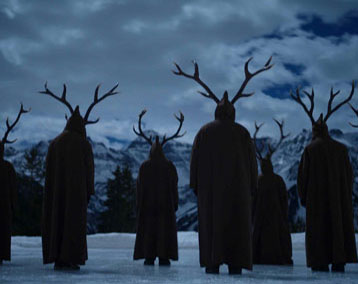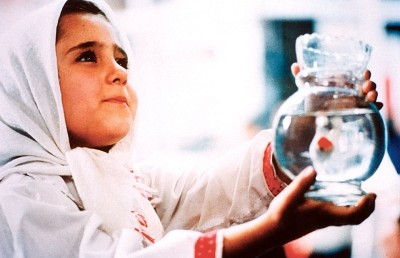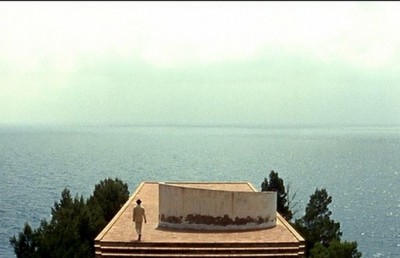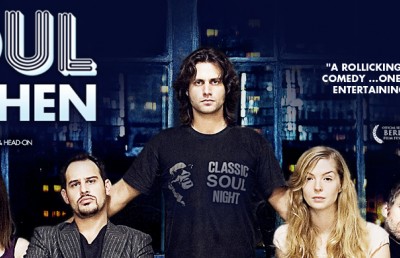World Film Festival 2009
Genre Films Welcome
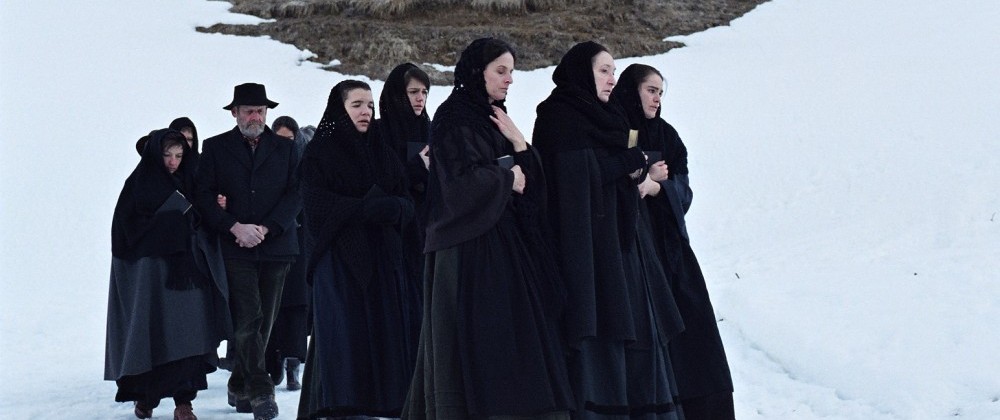
With the controversies and inner politics of government funding tamed down from recent years, I had the sense that what was most on people’s minds this year at the WFF were the films, which was a good thing given that there were some intriguing films on display. Intriguing but ultimately bizarre is the best way to describe the Iranian drama, Penalty (2009/Colour/100 min, Dir. Ensieh Shah Husseini), a strange mixture of social realism and symbolism. The story concerns a community whose homes were destroyed during the Iraqi War, and who have since been living on an oil field, courtesy of –hold your ironic horses– a benevolent oil company. One irate Iranian I spoke to after the film viewed it as terrible propaganda film because of the way it glosses over the obvious social ills, and he could not get beyond the awful irony that the very the riches (the oil) that were fought over in the War have not been used to better the living conditions of these victims. The crux of the film builds toward a showdown soccer game between the poor community and the oil company team, which ends in the tragic on-field (a metaphor for the war arena?) death of a player. The character’s death is marked by a subjective flash to the war, which implies that his death is a remnant of chemical warfare exposure. Rather than becoming angry at their oppressors, all the fans join the players on the pitch and march off in tribute to his martyrdom. A strange end indeed.
Also disappointing was Be Sure to Care (2009, Sion Sono, Japan), especially after seeing Sono’s wonderful Love Exposure just a few months earlier at Fantasia. There was nothing in this maudlin melodrama to remind me of previous Sono films (although upon hearing that the film was a tribute to his father, who had recently died, it made me at least understand where the film was coming from). After the death (from cancer) of hard-willed father, a son regrets never having expressed his love for his Dad when he was alive. The denouement features the son stopping his father’s funeral procession to stay true to his promise of going fishing with his father (which he regrettably never found the time for while his father was alive). He momentarily sabotages the hearse and takes his father’s corpse down to the shore. He props his father’s corpse onto a bench, sticks a fishing rod in his hand, and fulfills his wish. It ends with a flashback (or fantasy projection) to an earlier domestic scene in which the father steps outside to look at a cicada. (There are several references to the shell of a cicada bug in the film, which could be a reference to Buddhist afterlife.) He kneels over as if experiencing a hard attack, and seemingly dies. Before the father dies the son learns that he too has cancer, which might also explain his previous action.
Far more to the positive side of the ledger was Andrjzej Wajda’ Tatarak (Sweet Rush, Poland, 2008), a lovely, sad, elegiac double tribute to Polish Post WW2 history and Polish cinema. The film is dedicated to the memory of Wajda’s long-time cinematographer Edward Klosinski, who died January 8, 2008, about one year after Wajda had begun shooting Tatarak. Edward Klosinski was married to actress Krystyna Janda, who plays two characters in the film; herself (in the present day), speaking to a static camera from inside her sparse, elegant country home about the last days of her life with her husband Edward Klosinski, and his battle with lung cancer; and Marta (in the historical past), an attractive middle-aged woman married to a doctor who slowly falls in love with a man much younger than her, a blue collar worker Bogus (Pawel Szajda), who reminds her of a son she lost in the war. Sadly, no tragically, just as she is beginning to connect with the young man, he drowns while swimming to retrieve for her the titular reeds. Director Wajda explains how Janda’s personal confessions contributed to the shape of the film: “When we were toward the end of shooting the final episode with doctor’s wife Marta, and a young man, Bogus, Krystyna handed me a couple of pages that she herself had written. To my surprise, what I read was her description of the final days of the life of Edward Klosinski. ‘Is this for me personally or do you want everyone to know about it through the film?’ When she admitted that she wanted to share her experience with others, I realised that every day she returned to her hotel and, in her solitude, mused on those thoughts. Instantly, my mind conjured up those images by [Edward] Hopper of lonely women in their hotel rooms” (Andrzej Wajda, Director’s Statement, Sweet Rush Press Kit).
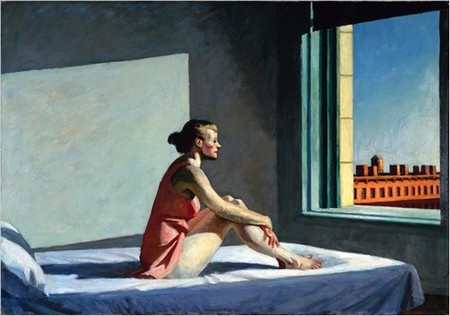
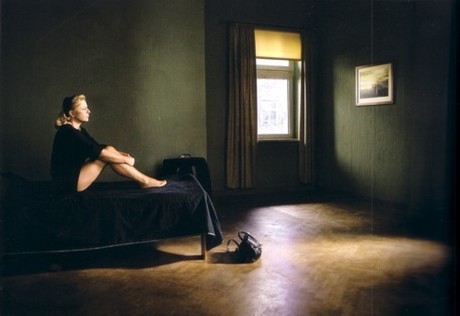
Another European workhouse featured this year was Festival favorite Theo Angelopoulos, with his follow up to Weaping Meadow, The Dust of Time (2008), which features a stellar international cast including Willem Dafoe (repeating from Weaping Meadow), Bruno Ganz (who starred in Eternity and a Day), Michel Piccoli, Irène Jacob and Christiane Paul. Compared to earlier Angelopoulos, The Dust of Time offers more to the uninitiated with its star cast, English language, and more of a plot-driven structure. Like Ulysses Gaze, The Dust of Time features the character of a film director (also named, as was Harvey Keitel, A., played by Dafoe) who returns to Rome to continue shooting a film he had begun earlier but inexplicably stopped. Angelopoulos uses the return to a personal past to weave recent 20th century landmark historical events across (mainly) Europe and North America, borrowing the strategy of aligning social history with family history common among such Italian directors as Bernardo Bertolucci, Ettore Scola, and Luchino Visconti, and more recently with the crime film, directors Michele Soavi, Michele Placido, and Marco Tullio Giordana. Although not top drawer Angelopoulos, The Dust of Time still has a few stand-out moments of ‘poetic history’ (through the use of long takes –though tapered off here– camera movement, mist-ridden landscapes, etc.) that have shaped his greater works.
As someone who has been attending this festival for years, I have noticed that genre films are never featured much. For this reason I was pleasantly surprised to come across so many fine genre films this year. (In fact, this ‘loosening up’ to genre films has been in evidence for a few years, most notably last year when an Italian horror film I had seen and liked a lot (Last House in the Woods) and that was (wrongly I feel) overlooked by Fantasia was shown in the well-intended but ultimately ill-fated ‘Midnight’ series.) There were more than a few films this year that would not have been out of place at Fantasia. One was Van Diemen’s Land (2009, Jonathan auf der Heide, Australia) an excellent, taut prison escape thriller based on the real life exploits of Irish convict Alexander Pearce 1790 – 1824, who confessed to having survived escape (twice) by cannibalizing his fellow prisoners. In fact, a horror film that showed at Fantasia last year, Dying Breed featured fictional characters that were descendents of Pearce. The story begins with Pearce and seven other prisoners escaping the penal settlement in Tasmania’s Macquarie Harbour during a wood-chopping expedition. The narrative soon devolves into an “And Then There Were None” plot, but still with much to recommend. The self-appointed leader Robert Greenhill (Arthur Angel) loses control as the harsh weather conditions, hunger, and paranoia turn the men against each other (the fact that some of them are Irish and some English doesn’t help matters). The tension builds not from the plot, since we know where the film is heading, but the unpredictability of the kill, and the representation of the violence, which is felt profoundly even though most of it occurs off-screen. The first kill for the sake of survival is quick and brutal. From this point on the men fear for each other’s lives. As the human food stock (carried ominously in a burlack bag) dwindles the audience tries to guess which way the tenuous allegiances will go, and ultimately, who will be sacrificed next. The whole film takes place inside the dank and cloistered woods, with little breathing space. Director auf der Hedie’s muted color scheme and naturalistic lighting, in conjunction with Jethro Woodward’s low-key strings and guitar soundscape, underscores the claustrophobic setting. The most visceral death is the one where Pearce (played by the co-scripter Oscar Redding) kills an injured man. Why he is particularly brutal with this kill is ambiguous. Perhaps because he knows the other surviving man (who may have been the victim’s lover, since there is a subtle exchange of emotions between them in the death scene) is watching and he wants to establish his alpha male status? After jabbing him with the tip of a shovel he finishes him off by repeated punches to the face. The camera assumes the near perspective of the victim looking at Pearce’s psychopathic expression. The survival ordeal comes down to two remaining men, Pearce and his final victim. Night time increases the paranoia, but Pearce is like an owl sleeping with one eye open. Who will survive the night? The scene fades out to morning and fades in on the close-up of the other man as he opens his eyes, with death in them as he realizes the imminent threat of Pearce hovering over his vulnerable body; before long Pearce jumps into the frame and kills him. The final kill comes only moments after they appear to have found refuge. Pearce is arrested, but the authorities ironically think that his story of cannibalism is a cover for his escaped mates. The ending clouds over myth and history, but in the true account Pearce was apparently sent back to Macquarie Harbor, where he escaped again, cannibalized again, and then was caught and hung in 1824.
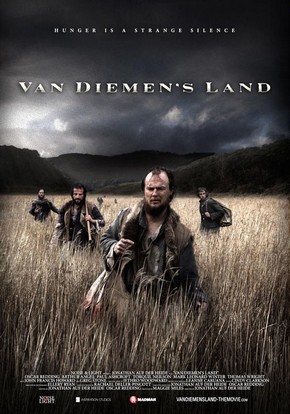
Russia 88 (Pavel Bardin, 2009) tackles the recent trend toward video diary mockumentary and, while not entirely original is still an engrossing account of a group of young neo-Nazis trying to uphold a twisted, xenophobic ideology. The film is told from the camera point of view of an offscreen half-Jewish character Abraham (Mikhail Polyakov), who lives in the dangerous circles of a group of Moscovite neo-Nazis. The ’moral’ center of the film is his friend Blade (Petr Fedorov), who takes a special interest in his sister’s burgeoning relationship with a Tajik youth (Kazbek Kibizov). The neo-Nazis have loose organizational links to Russian gangsters, who use them as muscle and protection. Although the neo-Nazis seem to do more talk than violence, there are a few bursts of violence, mainly against foreigners, most notably a scene where they attack a flea market run by mostly foreigners. When Blade’s sister (Vera Strokova) becomes romantically involved with the young Tajik man Blade takes things into his own hands, which leads to the film’s tragic Romeo and Juliet-like conclusion. The Variety review rightly likens the film to Romper Stomper, Man Bites Dog and Romeo and Juliet, but the performances (especially Federov and his overweight gangster father) are what make the film worth a look.
One of the more intriguing genre titles at the festival was Invisible Eyes (2009) a UK-France co-production directed by young French filmmaker Olivier Cohen, and starring a German actress with a bright future, Pia Mechler (as fashion model Gaby). Simon Merrells stars as her agent (Dan). Although the film ultimately runs out of steam and introduces a surprise twist which probably read better on the page than it plays out on screen, there are still many interesting visual ideas, some atmospheric set-pieces, and an empowering performance by Mechler, as a fashion model on the wrong side of thirty who is encouraged by her agent Dan to make a career change to acting. For the purposes of isolated time to read scripts and prepare for potential casting interviews, Dan drives Gaby out to his country cottage, where the plan is for her to read scripts, watch movies, and think through her career change. Instead, the isolation begins to play tricks on Gaby’s fragile state of mind (her insecurity as an ‘aging’ no-longer-in-demand model, the traumatic past incident of her first lover who died in a motorcycle accident, etc.). The premise recalls Polanski’s classic woman goes mad film Repulsion (complete with homage ‘startle effect’ of the silhouetted figure that suddenly appears in a mirror and frightens the protagonist), but director Cohen introduces his own twists and psychological touches.
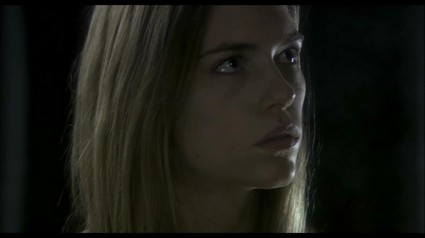
The film’s opening credits are superimposed over images of rippling water –a common Jungian symbol of the unconscious– and Gaby’s head, which foreshadow the ‘mind-subjective’ nature of the film. Then when we first see Gaby she is looking into a mirror, another visual motif that the film will play on. Right from the start of her secluded stay the film’s form cues us to the possibility of another presence in the house, with deceptive could-be-subjective point of view shots (camera behind objects, slightly jittery), coupled with Gaby’s own sense of insecurity (she even tells Dan that she feels the presence of a spirit in the home, a sentiment that will prove real). She begins to see little notes left behind seemingly in her hand-writing. Gaby’s guilt over the accidental death of her first true love weighs heavily on her mind (as she reveals to Dan). Is the cottage really haunted by the ghost of her first lover Jimmy, or is Gaby imagining it? Is Dan trying to drive her insane for some ulterior purpose? As the plot thickens we discover some truth to the former: the cottage is indeed haunted, but not by Gaby’s former lover but by a former actor, Gygess (played by British stage actor Michael Mears) who lived in the cottage before Dan purchased it from him. At this point, with the introduction of a third major character, Gygess, an actor whose career followed the same path as Gaby’s (fame that flickered and died), the film loses its suspense and terror, and shifts into the “is it art or reality” gear (echoig Adaptation and The End). Is Gaby just a character in Gygess’ ongoing script? Or is it Gygess who is merely a figment of Gaby’s imagination?
Pai Mechler carries the film with her wonderful performance. She is in practically every shot and has some difficult scenes to play out, long, unbroken dialogue scenes, scenes where she speaks to herself or an imagined, invisible presence. A poorer actress would have made these potentially ludicrous scenes … ludicrous. Mechler has an obvious beauty (the actress was indeed a model before turning to acting) but uses her body, voice and expressive eyes to signal the many different emotions and subtle changes in her state of mind. She drift effortlessly from dream like fantasy states to reality states. Her slight German accented English also works for the performance, adding a sense of ‘anywhere/anyplace’ to her identity. Director Cohen cleverly evokes some masterpieces of ‘woman gone mad’ films, like the aforementioned Repulsion (a woman slowly going made in a single apartment/home, a madness fueled by insecurity and sexual fear; plus the Deneuve character also worked at a beauty parlor, which is another connection to the beauty industry); Bergman’s Persona (with Liv Ullman and Bibi Andersson as the two characters whose identities merge) and Red Desert (with Monica Vitti as the emotionally-charged woman struggling to regain balance after the trauma of a nervous breakdown). In the latter film Monica Vitti uses an outstretched hand and flaying arm to reflect her inner unease during a sex scene with the character of Corrado (Richard Harris). Gaby makes a similar gesture during a forced sex scene with a stranger who gains access into the cottage.

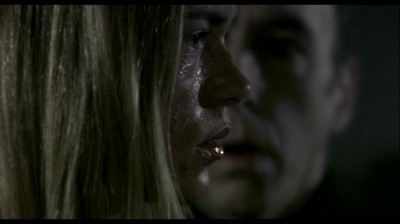
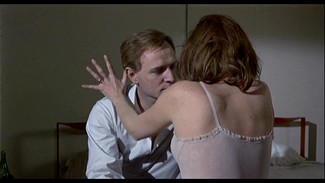
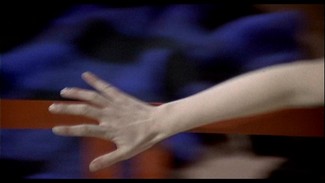
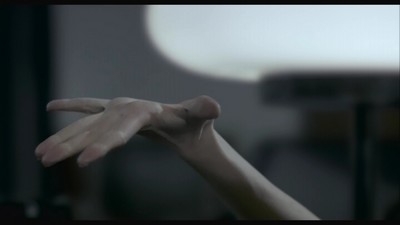
It is not too often that you get the opportunity to see a Kazakhstan genre film, so I was glad to catch Strayed (2009 /Colour /90 min, Dir. Akhan Satayev) at the WFF. The film starts off like a taut domestic drama, before veering off into horror territory. A man is driving with his wife and child through the steppes. The car gets stranded, and the tension of the moment leads to a wicked argument between the husband and the wife, with the wife admonishing him for “pulling her into it” (the full meaning of which we will only get at the end). An odd overnight temporal ellipsis sees the man wake up to an empty car. Where did his wife and child disappear to? He walks around the immediate area, calling out their names, to no avail. He then sees a house far off the road. He goes to explore what seems like an isolated house, until a tall, bearded man appears. He seems friendly but our hero is cautious. Enter a strangely beautiful yet oddly menacing, lithe, tall, dark-haired lady, announced as the bearded man’s daughter. Her face is very angular, white, ghostly. He is attracted to her yet repulsed As he begins to pick up clues he suspects the father and daughter of being behind the disappearance of his family, or at least concealing their whereabouts. He continues to find mysterious clues. A locked room, in which he sees something move inside; recognizable clothes in the attic. When things don’t add up and he sees visions of his wife, he begins to question his own grip on reality. The film’s visual tone at times, as well as some thematic elements, recall Tarkovsky’s Stalker; for example, he walks in one direction away form the car, only to find himself back where he started, at the same car (recalling the Stalker’s warning that “there are no straight lines in the Zone”). By this point we too begin to suspect that there is more than meets the eye to our hero’s predicament. Fate perhaps? A flashback fills in the events of the earlier ellipsis. We learn that our ‘hero’ strangled his wife and then accidentally killed his son, by a violent push to the floor. He buries them physically and then tries to bury the memory of the event by blaming the two strangers, who are revealed to be his death angels in human form, summoned (by God? By Fate? by the Devil?) to ensure that justice is served for the crimes he has committed. We also discover the meaning of his wife’s earlier cryptic line (“pulling her into it”): he was working for a drug cartel, transporting drugs in his spare tire to be handed over to a group of gangsters at a designated spot in the desert. Once he realizes what he has done he becomes so overwhelmed by guilty that he loses his will to live, repents and allows himself to be caught and killed by the gangsters. As the gangsters ask him for the whereabouts of the drugs, threatening death, he just repeats his admission of guilt, asking for God’s forgiveness.

I’ll conclude with one of the sleepers and highlights of the festival, Winterstilte_/_Winter Silence, 2008 /Colour /70 min, Dir. Sonja Wyss, Netherlands). Set in the stark wintry Swiss Alps, Winter Silence, directed by video artist Sonja Wyss, is one of those little gems that you will only ever see at a film festival. Though it recalls Bergman and Dreyer in its Nordic sensibility, the film it perhaps most invokes is a little seen Finnish horror classic which played at this year’s Fantasia Film Festival, Valkoinen Peura??/??The White Reindeer (1952, written, directed and photographed by Erik Blomberg), which is set in a similar landscape (the icy Finnish tundra) and also makes use of Nordic mythology/folktales. The latter is more of a genre piece, foreshadowing the thematic of repressed female sexuality unleashed through animal/monster transformation, and the gothic tone of Hammer horror, but the Freudian nature of the film’s gender sexuality (liberated female sexuality as a frightening proposition for males), is also in evidence (albeit in a more metaphoric manner) in Winter Silence, which plays on the mechanism of female sexuality repressed and then liberated using Nordic mythology and folktale rather than horror iconography. The resulting effect is equally unsettling, mainly because of the way the logic of the opening –a fathers’ (Werner Imhoff) accidental fall to his death leads to a mournful state for his widow (Gerda Zangger) and their four daughters (Sandra Utzinger, Brigitta Weber, Katalin Liptak, Sarah Buehlmann)– gives way to surreal imagery (a owl enters the house through a window and then begins walking in reverse, while dropping little fury turd-like objects along the wood floor) and irrational behaviour (the four daughters seated side by side in a room silently rolling eggs between the balls of their feet). The death of the patriarch (caused by the fall into a ravine) seemingly has the reverse affect of liberating the daughters, who begin to enjoy the pleasures of the flesh courtesy of nightly visitations from ‘reindeer men’ and, even more mysteriously, a large, expressive owl. The film plays almost entirely without dialogue and a somber chamber-like music score and features some stunning natural cinematography by Peter Brugman (shot in HD). This is one to surely revisit on DVD.
